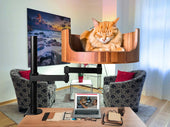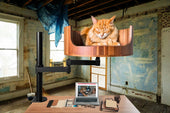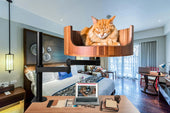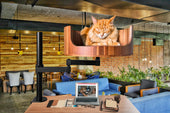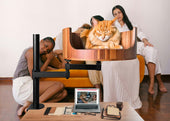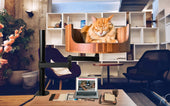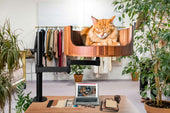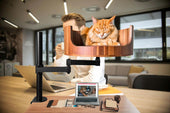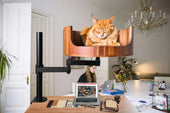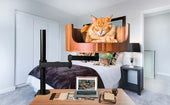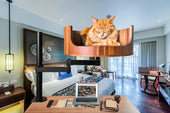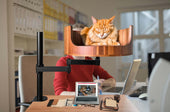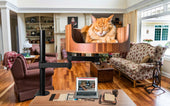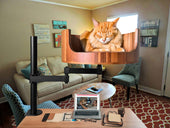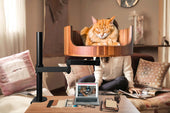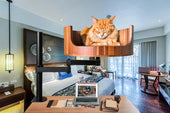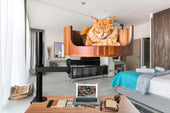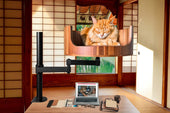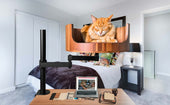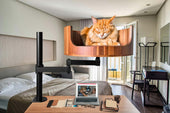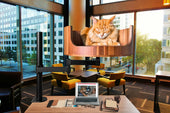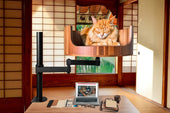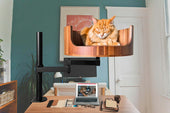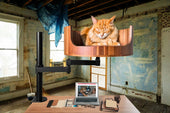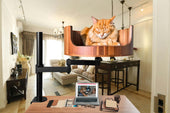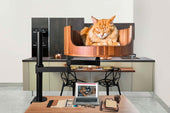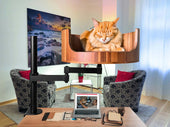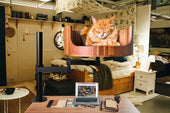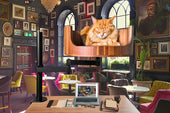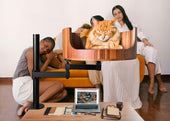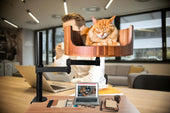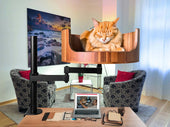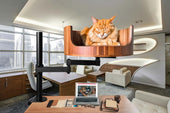
My Cat Refuses to Eat: Understanding the Reasons
Share
Does your cat suddenly refuse to eat? This could be a sign of underlying health issues, stress, or simply a change in preferences. Understanding the reasons behind your cat's refusal to eat is crucial for their well-being. In this article, we will delve into the various factors that can contribute to a cat's loss of appetite, as well as provide tips on how to encourage your feline friend to start eating again.
Desk Cat Nest is here to guide you through the common reasons why your cat might be refusing to eat, from dental problems and digestive issues to emotional stress and environmental changes. We will discuss how to properly assess your cat's overall health and behavior, as well as offer recommendations on when to seek veterinary care. Additionally, we will explore different feeding strategies and food options to help entice your cat to eat. By gaining a better understanding of your cat's eating habits and preferences, you can ensure that they remain healthy and happy.
1. Cats may refuse to eat due to stress, illness, or food preferences.
2. It is essential to rule out any underlying health issues by consulting a veterinarian.
3. Changes in environment, routine, or diet can impact a cat's eating habits.
4. Providing a comfortable and quiet feeding area can encourage a cat to eat.
5. Offering a variety of food options and ensuring proper hydration are crucial for a cat's overall well-being.
Medical Reasons for Refusing to Eat
We must first rule out any underlying medical conditions that could be causing your cat to refuse food. Cats can develop dental issues, gastrointestinal problems, kidney disease, infections, or other health issues that can affect their appetite. It's essential to consult with your veterinarian to conduct a thorough examination and possibly run diagnostic tests to identify any potential health concerns.
Behavioral Issues and Stress
Cats are highly sensitive animals that can easily become stressed or anxious, leading to a loss of appetite. Changes in their environment, routine, or the addition of a new pet or family member can trigger stress in cats. Additionally, cats may refuse to eat if they are feeling unwell emotionally or psychologically. It's crucial to create a calm and comfortable environment for your cat to help alleviate stress and encourage them to eat.
Dietary Preferences and Food Aversions
Some cats are picky eaters and may refuse to eat certain types of food or brands. Cats have unique taste preferences, and they may develop aversions to certain flavors, textures, or ingredients. It's essential to offer a variety of high-quality cat food options to determine what your cat enjoys eating. Gradually introducing new foods and flavors can help expand your cat's palate and ensure they maintain a healthy diet.
Dental Problems and Pain
Dental issues, such as gum disease, tooth decay, or oral infections, can make it painful for cats to eat. Cats with dental problems may avoid hard kibble or raw food and may refuse to eat altogether. Regular dental check-ups and cleanings are necessary to maintain your cat's oral health and prevent painful dental issues. Providing softer or wet food options can help cats with dental pain continue to eat comfortably.
Frequently Asked Questions
How can the Desk Cat Nest help with my cat refusing to eat?
The Desk Cat Nest provides a comfortable and secure space for your cat to relax and feel safe, which can help reduce stress and anxiety that may be causing them to refuse food. By creating a calming environment, your cat may be more inclined to eat.
Is the Desk Cat Nest easy to clean?
Yes, the Desk Cat Nest is designed with removable and washable cushions for easy cleaning. Simply remove the cushion cover and wash it according to the care instructions for best results.
Will my cat fit comfortably in the Desk Cat Nest?
The Desk Cat Nest is suitable for most cats, as it is spacious enough to accommodate a range of sizes. The plush cushion provides a cozy spot for your cat to curl up and relax, encouraging them to eat in a comfortable environment.
Can the Desk Cat Nest be placed in any location?
Yes, the Desk Cat Nest is versatile and can be placed on any flat surface, such as a desk, table, or shelf. Choose a quiet and secluded area where your cat feels safe and secure to encourage them to eat without distractions.
What should I do if my cat still refuses to eat after using the Desk Cat Nest?
If your cat continues to refuse food, it is important to consult with a veterinarian to rule out any underlying health issues. The Desk Cat Nest is designed to create a positive eating environment, but it may not address all potential causes of appetite loss in cats.
In conclusion, the Desk Cat Bed is a valuable choice for cats who refuse to eat as it provides a comfortable and secure space for your feline friend to relax and feel safe. The elevated design also helps to alleviate any potential stomach discomfort that may be hindering their appetite. By offering a cozy and inviting environment, the Desk Cat Bed encourages your cat to feel more at ease during meal times, ultimately promoting a healthier eating routine. Make the smart choice and invest in a Desk Cat Bed for your furry companion today.



